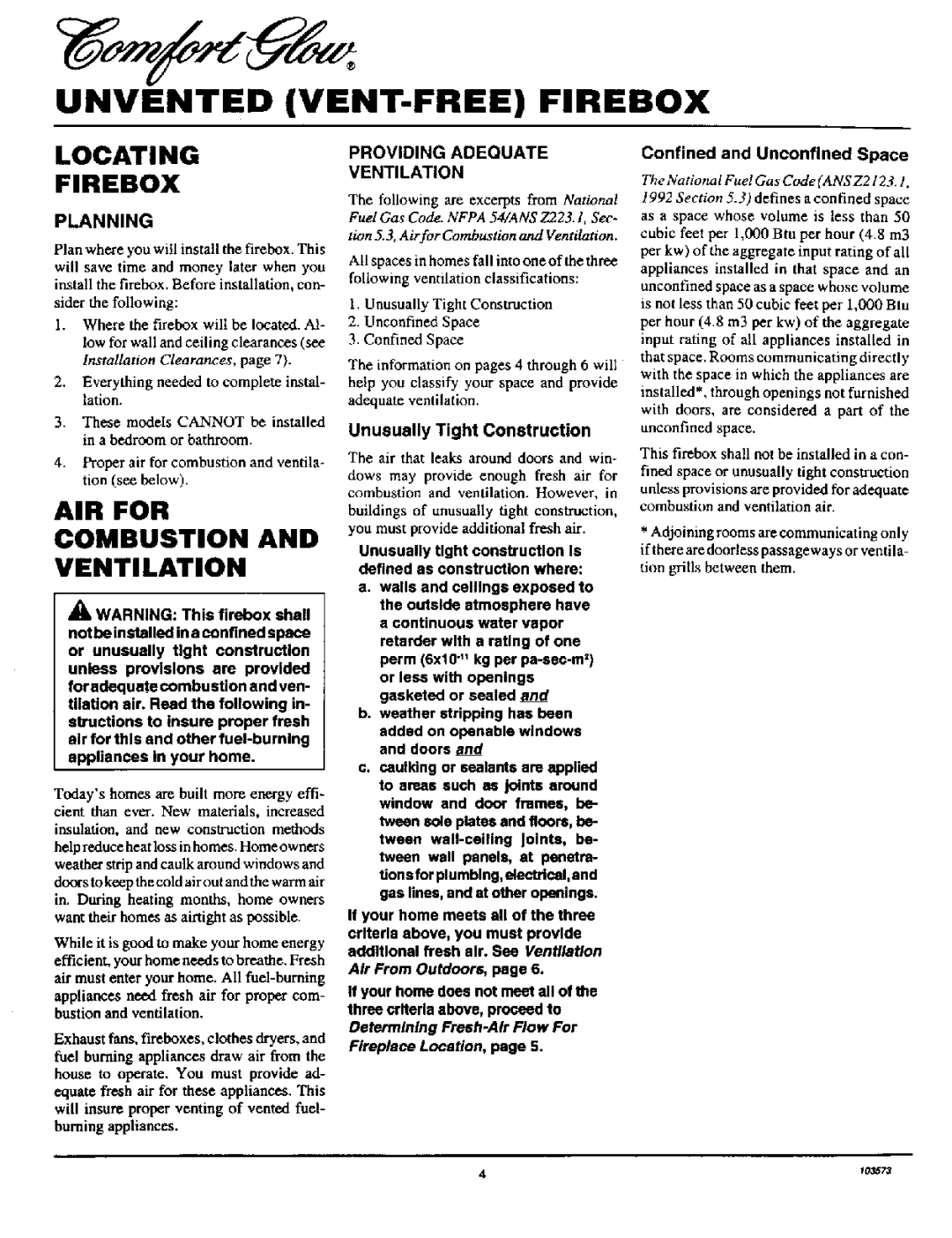CGFB32C, CGFB32NC specifications
Desa Tech has established a reputation for delivering innovative heating solutions, and their CGFB32NC and CGFB32C models are no exceptions. These gas-fired blue flame heaters are designed with user convenience, efficiency, and safety in mind, making them ideal options for both indoor and outdoor use.One of the main features of the CGFB32NC and CGFB32C is their ability to produce consistent and reliable heat output. These models utilize a blue flame technology, which operates by pulling in air from the surrounding environment and heating it before circulating it throughout the space. This process not only enhances energy efficiency but also ensures that the heat distribution is even, providing a comfortable living or working atmosphere.
In terms of specifications, both models are equipped with variable heat settings, allowing users to customize the temperature according to their specific needs. The CGFB32NC and CGFB32C are also capable of heating spaces up to 1,000 square feet, making them suitable for garages, workshops, and large living areas. Their portability adds to their versatility, as they can easily be transported from one location to another.
Safety is paramount in any heating device, and Desa Tech has incorporated multiple safety features into these models. The CGFB32NC and CGFB32C come with an automatic shut-off valve that activates in case of an accidental tip-over or if the heater overheats, ensuring peace of mind for users. Additionally, both models are certified by the relevant safety standards, assuring consumers of their reliability and secure operation.
Another standout characteristic of these heaters is their straightforward operation. They feature an easy-to-use ignition system, allowing for quick startups without the need for complicated setups. Both models are also designed to run quietly, making them suitable for use in environments where noise levels need to be kept to a minimum.
Durability is a key consideration for any heating appliance, and Desa Tech has focused on quality materials and construction in the CGFB32NC and CGFB32C. These heaters are built to withstand the rigors of daily use, ensuring longevity and providing good value for investment.
Overall, the Desa Tech CGFB32NC and CGFB32C gas-fired blue flame heaters stand out for their efficiency, safety, and user-friendly features. Whether it's for home, garage, or workshop heating needs, these models deliver reliable performance and comfort, making them an excellent choice for countless applications.

